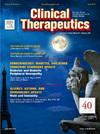葡萄牙鲍曼不动杆菌菌株中碳青霉烯酶的分子检测及其与序列类型、菌盖类型和毒性的关联。
IF 3.2
4区 医学
Q2 PHARMACOLOGY & PHARMACY
引用次数: 0
摘要
目的:耐碳青霉烯类鲍曼不动杆菌(CRAB)是一种重要的院内病原体。荚膜型(K 型)被认为是主要的毒力因子,有助于逃避宿主的防御。在葡萄牙,K型、序列类型(ST)、抗生素耐药基因和毒力因子之间的全球传播和扩散动态在很大程度上仍不为人所知:方法:对 2005 年至 2019 年期间在葡萄牙北部地区收集的 96 份 CRAB 临床样本进行了抗菌药敏感性测试,并通过聚合酶链式反应筛查了耐药基因决定簇。对 26 个具有代表性的分离物进行了全基因组测序,以评估 K 型、ST 型和基因组相关性。研究结果显示,在分析的96个CRAB分离物中,K型和ST型的致病性最高:研究结果:在分析的 96 个 CRAB 分离物中,观察到对碳青霉烯类、氟喹诺酮类和其他药物的耐药性较高(>90%)。对氨基糖苷类(尤其是妥布霉素)和阿米卡星的抗菌敏感性较高(30%~57%)。从基因型来看,75 株(78.5%)携带 blaOXA-23-like 基因,18 株(18.8%)携带 blaIMP-like 基因,11 株(14.9%)携带 blaOXA-40-like 碳青霉烯耐药基因。多年来观察到 OXA 与 ST/囊状位点(KL)类型之间存在关联(例如,OXA-40-like/ST46Past/KL120 和 OXA-23-like/ST2Past/ KL2)。克隆复合体 II 的 ST2Past 存在于大多数菌株中,是美国和欧洲的主要耐药菌系。KL7 也是最常见的 KL 型(38.5%),其次是 KL2(34.6%)、KL120(23.1%)和 KL9(3.8%)。对不同 K 型的 Galleria mellonella 模型进行的毒力评估显示,与 KL7、KL9 和 KL2 相比,KL120 的毒力显著增强:葡萄牙存在特定的CRAB血清型,这是因为获得的碳青霉烯酶基因(OXA-23-like和OXA-40-like)、ST类型(ST2和ST46)和KL类型(KL2、KL7、KL9和KL120)的多样性较低。ST2 的高流行率,尤其是与 KL2 和 blaOXA-23-like 相关联时,表明抗生素耐药性是由克隆复合体 II 的克隆扩增驱动的。这些发现提供了有关耐多药细菌多样性的有用信息,可能与抗菌干预措施有关。本文章由计算机程序翻译,如有差异,请以英文原文为准。
Molecular Detection of Carbapenemases in Acinetobacter baumannii Strains of Portugal and Association With Sequence Types, Capsular Types, and Virulence
Purpose
Carbapenem-resistant Acinetobacter baumannii (CRAB) is an important nosocomial pathogen. The capsular type (K-type) is considered a major virulence factor, contributing to the evasion of host defenses. The global spread and dissemination dynamics between K-types, sequence types (ST), antibiotic resistance genes, and virulence factors remain largely unknown in Portugal.
Methods
A collection of 96 CRAB clinical samples collected between 2005 and 2019 in the northern region of Portugal were tested for antimicrobial susceptibility profile and screened by polymerase chain reaction for resistance genetic determinants. A subset of 26 representative isolates was subjected to whole-genome sequencing to assess K types, ST types, and genomic relatedness. The pathogenicity of distinct K-types was also tested using Galleria mellonella model.
Findings
For the 96 CRAB isolates analyzed, high antimicrobial resistance (>90%) was observed to the carbapenems, fluoroquinolones, and miscellaneous agents. Greater antimicrobial susceptibility (∼30%–57%) was observed for aminoglycosides, particularly tobramycin, and amikacin. Genotypically, 75 strains (78.5%) carried blaOXA-23-like, 18 strains (18.8%) carried blaIMP-like, and 11 strains (14.9%) carried blaOXA-40-like carbapenem resistance genes, respectively. Associations between OXA and ST/capsular locus (KL) types were observed over the years (eg, OXA-40-like/ST46Past/KL120 and OXA-23-like/ST2Past/KL2). ST2Past of clonal complex II was present in most strains, a dominant drug-resistant lineage in the United States and Europe. KL7 was also the most prevalent KL-type (38.5%), followed by KL2 (34.6%), KL120 (23.1%), and KL9 (3.8%). Virulence assessment for different K-types in a Galleria mellonella model revealed a significantly increased virulence for KL120 when compared with KL7, KL9, and KL2.
Implications
There are specific CRAB serotypes circulating in Portugal, accounting by the low diversity of acquired carbapenemase genes (OXA-23-like and OXA-40-like), ST types (ST2 and ST46) and KL types (KL2, KL7, KL9, and KL120) identified. The high prevalent of ST2, especially when associated with KL2 and blaOXA-23-like, suggest that antibiotic resistance has been driven by clonal expansion of clonal complex II. Such findings provide useful information on the diversity of multidrug-resistant bacterium that might be relevant for antibacterial interventions.
求助全文
通过发布文献求助,成功后即可免费获取论文全文。
去求助
来源期刊

Clinical therapeutics
医学-药学
CiteScore
6.00
自引率
3.10%
发文量
154
审稿时长
9 weeks
期刊介绍:
Clinical Therapeutics provides peer-reviewed, rapid publication of recent developments in drug and other therapies as well as in diagnostics, pharmacoeconomics, health policy, treatment outcomes, and innovations in drug and biologics research. In addition Clinical Therapeutics features updates on specific topics collated by expert Topic Editors. Clinical Therapeutics is read by a large international audience of scientists and clinicians in a variety of research, academic, and clinical practice settings. Articles are indexed by all major biomedical abstracting databases.
 求助内容:
求助内容: 应助结果提醒方式:
应助结果提醒方式:


